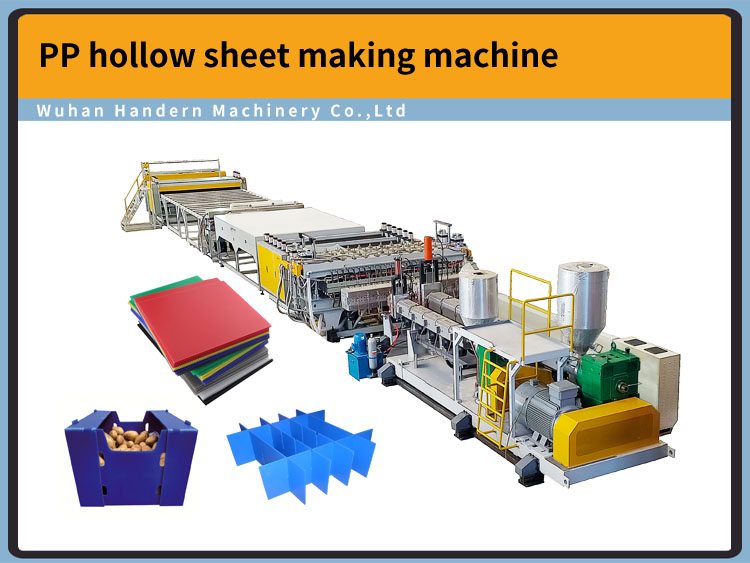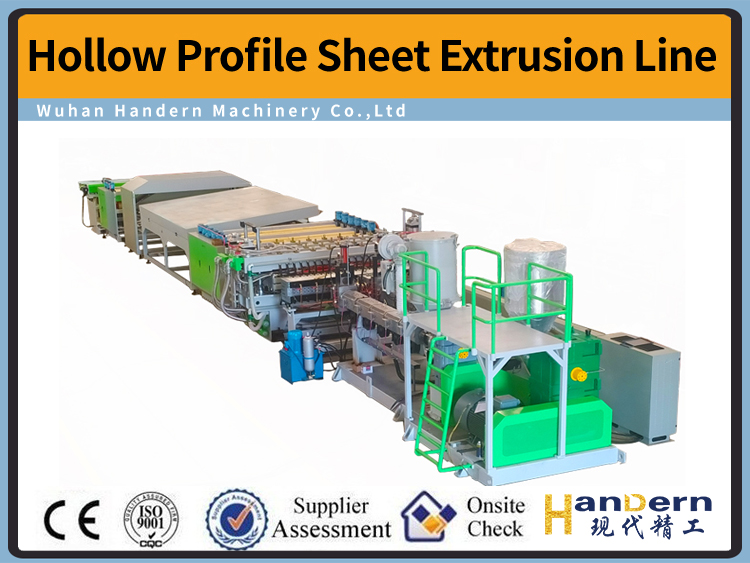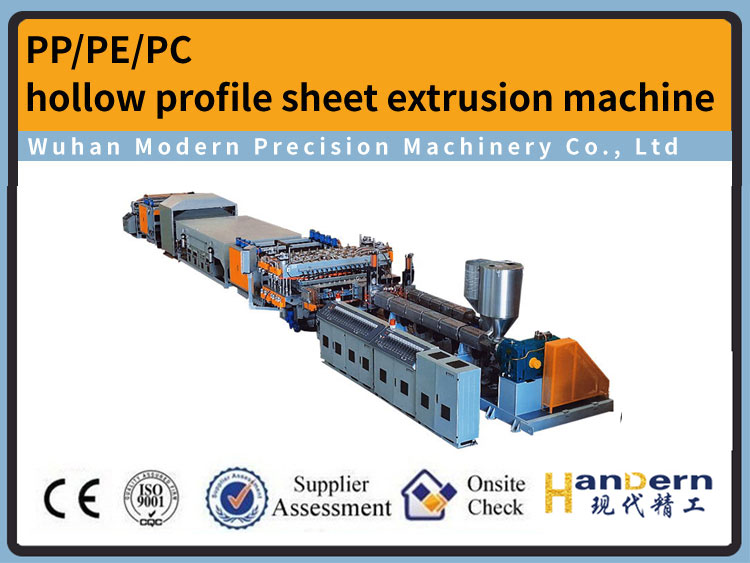Blending of Wuhan modern polypropylene and ethylene propylene rubber
DATE:2021/3/30 8:43:35 / READ: / SOURCE:This station
Blending of Wuhan modern polypropylene and ethylene propylene rubber
Plastic sheet production line www.Handern.comIn order to improve the impact property and low temperature brittleness of PP, a certain amount of ethylene propylene copolymer (EPR) can be added into PP to prepare PP / EPR blends. However, the heat resistance and aging resistance of the blends decreased. Another kind of modification of PP is ethylene endodiene terpolymer (EPDM) containing diene. The aging resistance of PP / EPDM is better than that of PP / EPR blends. Isotactic PP, EPR and EPDM are generally incompatible, so their blends have multiphase morphology. Under the same blending conditions, the composition ratio and the melt viscosity difference of different polymer components determine the morphology of the blends. When the melt viscosity of PP, EPR and EPDM is similar, the morphology of the blends is more uniform; when the melt viscosity of each component is different, if the viscosity of EPR is lower than that of PP, EPR can be well dispersed. On the contrary, if the viscosity of EPR is higher than that of PP, the phase domain of EPR is coarse and spherical, and the properties of the blends are not good. When the mass ratio of PP / EPR is 60t40 ~ 40 + 60, the phase transition occurs, and the two components are continuous phase. Plastic sheet production line www.Handern.com
EPDM is an early rubber used to toughen PP, which has a good effect on improving the toughness of PP. Ethylene propylene diene monomer (EPDM) polymerized by metallocene catalyst and ethylene propylene diene monomer polymerized by traditional Ziegler Natta catalyst have different toughening effects on PP. Compared with EPDM Blend, the brittle ductile transition range of PP / mepdm blend is much smaller than that of PP / EPDM Blend, the critical mass fraction of toughener is smaller and the elongation at break is higher. The tensile strength, elastic modulus and Vicat softening point of PP / mepdm and PP / EPDM blends decreased monotonously with the increase of toughener content, but the latter decreased more. The compatibility of PP / mepdm was better than that of PP / EPDM.
EPDM is a traditional rubber, while PP is a traditional plastic. The thermoplastic elastomer (TPE, TPV) with excellent properties can be prepared by blending and dynamic vulcanization of EPDM and PP, which is a typical example of the combination of rubber and plastic. Dynamic vulcanization is a new method to prepare TPE. Because the TPE prepared by this method has good properties, even better than the block copolymerized TPE in some aspects, it is not necessary to synthesize new polymers, but only need to blend the existing polymers. Therefore, the huge investment in developing new polymer products is saved. The key technology of preparing dynamically vulcanized TPV lies in the control methods and means of phase domain size, morphology and rubber phase particle size. The crosslinking degree of EPDM in EPDM / PP is an important factor affecting the phase morphology. EPDM / PP TPV with better properties and traditional rubber characteristics can be prepared only when EPDM has proper crosslinking degree and EPDM is easy to be sheared into micron size particles. The influence factors of PP / epdmtpv prepared by dynamic vulcanization are as follows
Under the condition of similar surface energy of rubber, PP resin with high molecular weight and high crystallinity was selected as the matrix component, and the TPV prepared had good comprehensive properties due to its high tensile strength, high elongation at break and small particle size of rubber dispersed phase. With the increase of MFR of PP, the swelling resistance and compression resistance of TPV decreased.
② The results show that the crosslinking effect increases with the increase of the crosslinking rate of EPDM, the average particle size of the gel phase decreases, the crosslinking degree increases, the compression and swelling resistance of TPV will be improved, and the micro change phase of TPV system is more uniform; EPDM has better processing morphology stability, but the crosslinking rate of EPDM is too high, and the rubber phase is prone to sulfur in the later stage of reactive extrusion Return to the original, so that the crosslinking side degree of power is small, lead to sell new mechanical properties is poor. Therefore, we should choose the appropriate rubber phase for the crosslinking rate. Because the particle size of rubber phase is small and the crosslinking needs to be high, the tensile strength is high, the elongation at break and permanent deformation are low, and the product performance is good.
③ The crosslinking degree of EPDM in EPDM / PP system decreases with the decrease of rubber to plastic ratio, i.e. the increase of P content. This is because on the one hand, P printing has a diluting effect on the accurate sum, and on the other hand, the effect of a very small amount of sulfur and phosphorus on the rubber to plastic ratio loses phase at high temperature. These two effects are more significant with the increase of PP content EPDM in EPDM / PP has appropriate crosslinking degree, so the content of sulfur carbon and auxiliary powder should be increased to make up for the above two effects. With the increase of EPDM content, the hardness, tensile strength, tensile strength, tensile strength, tearing strength, 300% elongation stress, water aging deformation, swelling resistance and processing fluidity of the blends decrease, while the elasticity, side music, impact strength and batch elongation increase When the content of PPDM in the blends exceeds a certain value, the tensile strength decreases gradually. The impact strength of the blends with 30% - 40% EPDM is the best. Plastic sheet production line www.Handern.com
④ The influence of curing system on EPDM / PP TPV can be cured by phenolic resin, sulfur and peroxide. The properties of EPDM / PP blend TPV prepared by the three vulcanization systems were studied. The results showed that the morphology and structure of TPV prepared by the three vulcanization systems were different, and the physical properties, rheological properties and processing properties were quite different. The results show that the crosslinking degree of EPDM in phenolic resin vulcanized TPV is higher, and it has better mechanical properties and processing rheological properties; the TPV prepared by sulfur vulcanized TPV has higher strength and better elasticity, but its processing properties are general; the TPV prepared by peroxide vulcanized TPV has poor mechanical properties and processing properties, but it has good heat resistance and excellent creep resistance at high temperature. In addition, peroxide and sulfur can be used to dynamically crosslink EPDM / PP blends, in which peroxide can crosslink rubber and degrade PP; a small amount of sulfur ore can well control the occurrence of PP degradation reaction, which is helpful to inhibit the degradation degree of PP.
Author:admin




